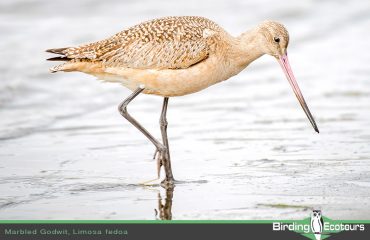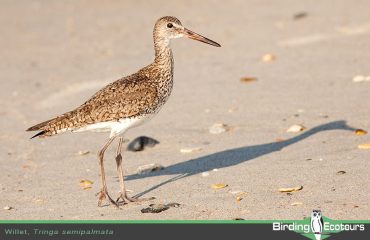2027 Virginia – Bombay Hook and Chincoteague NWR
-
Reviews 0 Reviews0/5
-
Vacation Style Holiday Type
-
Beach
-
Binoculars
-
Hiking
-
-
Activity Level Moderate
-
Group Size Medium Group
This will be a wonderful tour of memorable birding at beautiful locations. The tour will include a half-day visit to Bombay Hook NWR and a day and a half at Chincoteague NWR. We’ll travel the length of the Delmarva Peninsula to Kiptopeke State Park and the Eastern Shore of Virginia NWR, at the mouth of the Chesapeake Bay.
There will be migrant warblers, shorebirds, waterfowl, and local specialties such as Brown-headed Nuthatch and American Oystercatcher. Rarities that we have found at this time of year include American White Pelican, Yellow-crowned Night-Heron, Eurasian Wigeon, Dickcissel, and Snow Bunting.
Chincoteague Ponies and Delmarva Fox Squirrels are always big favorites, as are the flocks of waterfowl and shorebirds that may contain a nice rarity, perhaps a Ruff. This will be a great tour at a comfortable pace. Evening dining will offer seafood fare for which Chincoteague’s restaurants are famous.
We will take a maximum of seven participants. On rare occasion we may extend the maximum to ten participants.
Duration: 5 days
Limit: 4 – 8 participants
Date: 15 October – 19 October 2027
Start: Philadelphia, Pennsylvania
End: Philadelphia, Pennsylvania
Price:
US$2471 per person sharing assuming 4 – 8 participants
Single supplement: US$434
We can run the same trip at a price similar to the larger group price for 2 tour participants, if they rent their own vehicle and pay for fuel – please e-mail [email protected] for details.
- Meals
- Accommodation
- Guiding fees
- Entrance fees
- All transport while on tour
- Tolls
- Domestic and International flights
- Items of a personal nature, e.g. gifts
- Alcoholic drinks
- Personal insurance
- Laundry Service
- Gratuities
BOMBAY HOOK AND CHINCOTEAGUE NWR
19-22 October 2012
1 – Saltmarsh Sparrow – we had simply incredible, close-up, prolonged views of two adults and a juvenile in the salt marsh at Eastern Shore of Virginia National Wildlife Refuge.
2 – Great Cormorant – two immatures were in close comparison to several Double-crested Cormorants on the south jetty of Ocean City Inlet.
3 – Brown-headed Nuthatch – there were numerous individuals easily seen and heard at Chincoteague National Wildlife Refuge.
4 – Red-breasted Nuthatch – many were readily found throughout the tour during this major invasion year.
5 – American Oystercatcher – these showy shorebirds are always a big hit on the Chincoteague oyster beds.
6 – American Avocet – there were hundreds on the Bombay Hook impoundments.
7 – Stilt Sandpiper – our best look was of two individuals on the Wachapreague mudflats.
8 – Marbled Godwit – one of these large cinnamon-colored shorebirds was with a large flock of Willets at Swan Cove, Chincoteague.
9 – Golden-crowned Kinglet – these birds usually feed high in tree top canopies, often in evergreens. We found a nice fallout on the dunes and in goldenrod at Indian River Inlet.
10 – Black-necked Stilt – a single bird was with Avocets at Bombay Hook. This is late in the season for this species.
We were fortunate enough to see numerous Atlantic Bottle-nosed Dolphins at several locations. Chincoteague National Wildlife Refuge yielded SIX Delmarva Fox Squirrels (a federally endangered species) and six Wild Ponies.
We identified 12 species of butterflies that included Common Buckeye, many Monarchs, Red Admiral, American Lady, Mourning Cloak, Great Spangled and Meadow Fritillaries, Cloudless, Clouded, and Orange Sulphurs, Delaware Skipper, and Cabbage White.
-
Will we do any birding the first day?
-
How should I dress for the tour?
-
Besides clothes, what do I need to bring?
-
What language are tours conducted in?
-
Can you help me book flights?
-
Can you book accommodation for us the night before the tour starts or the night the tour ends?
-
Do you provide trip insurance?
-
Are meals included?











